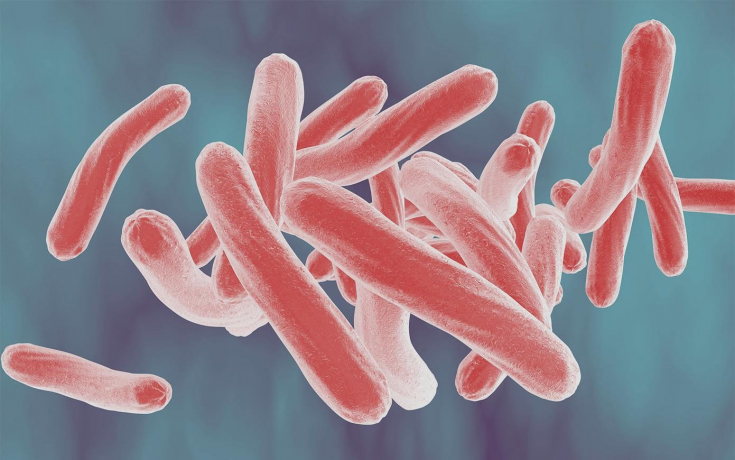When mycobacterium tuberculosis enters the human body, tuberculin infection develops, which covers many organs and systems. Skin tuberculosis is one of the manifestations of tuberculosis infection. In patients with skin tuberculosis, the lymph nodes are often the first to react with the development of tuberculous lymphadenitis.
Pulmonary tuberculosis develops in a third of cases of skin tuberculosis and often has a benign course, manifesting itself as fibro-focal changes in adults and a primary complex in children. Skin tuberculosis can develop along with bone tuberculosis.
Read more on estet-portal.com about the main elements of rashes in skin tuberculosis.
- How does tuberculosis get infected on the skin
- Relative and absolute signs of TB skin infection
- Main manifestations of clinical forms of skin tuberculosis
- Characteristic manifestations of collicative tuberculosis of the skin
How does skin infection with tuberculosis occur?
Skin tuberculosis usually develops in childhood, before the age of 10, but adults also become infected with the disease, which is often associated with their working conditions.
Veterinarians and slaughterhouse workers can become infected by exogenous means. But more often, skin tuberculosis infection occurs with the patient's own mycobacteria.
So, with active tuberculosis of the larynx and lungs, the mucous membrane of the lips can be affected, with intestinal tuberculosis, the skin of the anus area is affected.
Dermatology nutrition rules: what type of skin is this diet
After getting on the skin, mycobacterium adapts to environmental changes and undergoes many changes in its morphology, structure and resistance, causing different clinical forms of skin tuberculosis.
Skin response depends on location, organism reactivity and virulence.
Relative and absolute signs of tuberculous skin infection
In the presence of dermatosis on the skin, its tuberculosis nature can be confirmed or refuted by absolute and relative signs.
Absolute Features tuberculous skin infection:
- positive result of inoculation of pieces of diseased guinea pig tissue;
- intradermal injection of tuberculin is accompanied by a focal reaction;
- detection of mycobacterium tuberculosis in the skin lesion.
Relative signs of TB infection:
- characteristic clinical picture;
- tuberculoid structure of lesions;
- epidemiological circumstances;
- variant of the course of the disease.
Read our articles on Facebook!
It was previously believed that diseases that proceeded with absolute signs are true tuberculosis of the skin, and those diseases that were accompanied by relative signs – tuberculides.
But studies have shown that such a separation should not really exist, because the tuberculoid structure is not specific to skin tuberculosis, but is only a manifestation of an inflammatory reaction of an allergic nature, which is also possible with tertiary syphilis or lepre.
There is also information about the detection of mycobacteria in histological sections of the skin with tuberculides.
Main manifestations of clinical forms of skin tuberculosis
Today, tuberculides are considered deciminated forms of true tuberculosis skin that appear with a sharp change in the body's reactivity.
True tuberculosis of the skin can have several clinical forms:
- tuberculous lupus;
- ulcerative tuberculosis of the skin;
- warts, frequent tuberculosis of the skin;
- collicative tuberculosis.
Often tuberculous lupus debuts in childhood. The primary element of the rash lies in the thickness of the dermis and has the name lupoma. This is a rounded, translucent tubercle , the size of a lentil, which rises above the surface, has a yellow-red color. Energetic pressure on the lupoma is accompanied by pain and a drop of blood – Pospelov's phenomenon. Lupomas with this variant of the course of skin tuberculosis can exist for years.
After its resolution, cicatricial atrophy or scar. spread over the skin, leaving behind bleeding ulcers, which can penetrate deep into the subcutaneous tissue. In some cases, ulcers can be on the face, damaging the soft parts of the ears, lips and nose. Ulcers heal very slowly, new lupomas may appear on them. Warty-common tuberculosis of the skinis common among adults, the infection enters the skin from the outside. Initially, a tubercle gray-red color, dense and smooth appears.
Immune function of the skin to guard the health and order of the body Later, the tubercle takes the form of a wart due to papillary growths on it.
Characteristic manifestations of collicative tuberculosis of the skinCollicative tuberculosis of the skin (scrofuloderma) is common among adolescents and children who have low active tuberculosis foci
of internal organs.Lesions begin in the lymph nodes, joints or bones and are localized in the subcutaneous tissue.
More often, the process cuts off the lateral surfaces of the neck, cheeks, chest, but the focus can also be on other parts of the body.
A dense smallnodule
appears in the subcutaneous tissue, which does not cause any sensations, it is limited.Slowly, the nodule increases in size, solders to the skin and a softening area appears in the center. This provokes an increase in the inflammatory response.
Purulent contents are discharged from the hole, over time these holes increase, merge and form onelarge and deep ulcer.
Such ulcers may connect with fistulous ducts.
Diagnosis and treatment of skin tuberculosis should be carried out by
phthisiatrician.
 Selected individually
Selected individually
Skin tuberculosis: prevalence and features of the disease
Treatment begins after a comprehensive examination of the patient.
Therapy for skin tuberculosis is carried out inpatiently with
antibacterial agents.More useful information on our channel in Youtube:







Add a comment